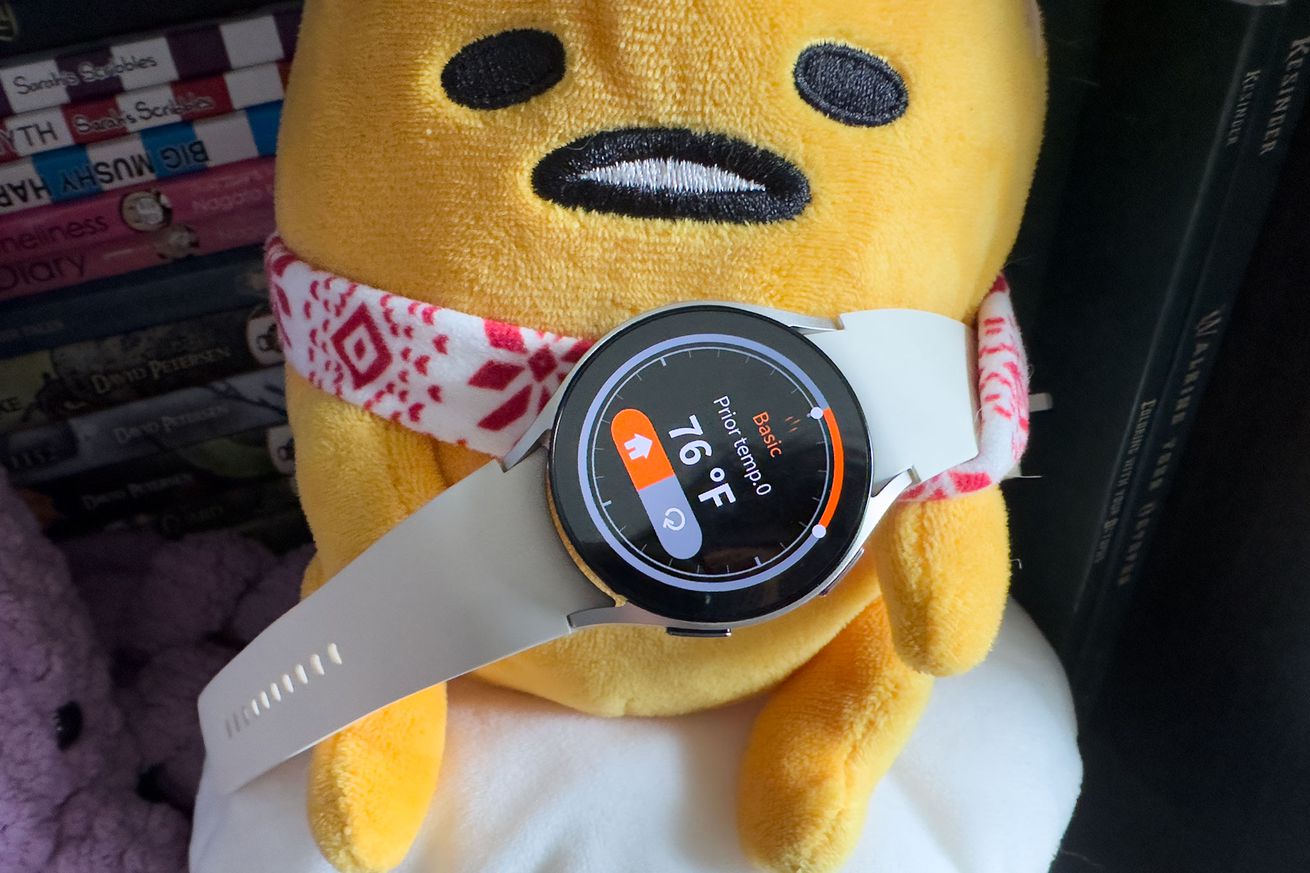
The Galaxy Watch 6’s Thermo Check app is a solution looking for a problem
Have you ever wondered what the temperature of your desk surface is? Me neither, but the Samsung Galaxy Watch 6 says it’s a balmy 81 degrees Fahrenheit. The other day, it said my cat’s fluffy belly was 88 degrees. My arm was apparently 86 degrees, and a cup of tea, Earl Grey, hot, was roughly 112 degrees. Just before I sat down to write this, it said my stainless steel fridge door was 79 degrees. The inside of the fridge was merely “Low.”
Why am I telling you this? Well, last year, Samsung introduced an infrared temperature sensor on its Galaxy Watch 5 lineup but didn’t really do anything with it at launch. This year, it’s promoting Thermo Check — a third-party app that lets you check the temperature of various things — as a way to highlight the sensor on the Galaxy Watch 6 and encourage developers to explore its skin temperature API. It’s fun, incredibly silly, and the epitome of a solution in search of a problem to fix.
The pitch is that you can use the watch as a contactless thermometer for surfaces and water. It’s as absurd as it sounds. In the app, you select whether you want to measure a “living” object or water. If it’s the former, you can choose between a basic, metal, or plastic / wood object, as well as the surface of water (or any other liquid). You’re prompted to take the watch off your wrist and place it near your target object. To measure water temperature, you simply have to dunk the watch on your wrist into the tub, pool, sink, or whatever water-containing vessel you’re curious about. Never mind that doing so will immediately tell you whether the water is cold, lukewarm, or hot.
During the process, the watch will remind you that under no circumstances is this to be used as a medical tool. As in, you shouldn’t hover the watch over your forehead to try and determine if you have a fever. It wouldn’t be accurate anyway. The Classic just told me my forehead is 92 degrees Fahrenheit. Technically speaking, that qualifies as hypothermia. I do not have hypothermia.
It’s not that the temperature sensor is always inaccurate. During testing, I compared the watches’ readings with an infrared thermometer gun and a meat thermometer for liquids. More often than not, it gets close. It’s just not what I’d call consistently reliable.
As ridiculous as testing as all of this was, it did get me thinking more broadly about how we use skin temperature sensors in smartwatches.
Most wearables, including Samsung’s, use skin temperature sensors for sleep and advanced period tracking. The problem is half the population doesn’t menstruate, and the average user doesn’t know how to interpret temperature data in relation to sleep. Slightly better accuracy isn’t a huge selling point, nor does it make temperature sensors a reason to upgrade.
The really cool uses for wearable skin temperature sensors also aren’t ready for prime time. During the height of the covid-19 pandemic, researchers and wearables companies were keen to see if wearables could predict infectious illnesses. Preliminary research indicates that it’s possible, and perhaps one day, smartwatches could tell you when you’re about to get sick. They also may never do this, either because the science won’t pan out or because companies won’t deem the potential medical liabilities worth it.
These days, wearable skin temperature data can also be used to predict fertile windows. Natural Cycles, for example, is an FDA-cleared birth control app that accepts the Oura Ring’s skin temperature data for this purpose. Oura has also participated in research to see if temperature data can also predict pregnancy. However, reproductive health is one of the dicier applications for wearable temperature data, especially given increased privacy concerns after the Supreme Court overturned Roe v. Wade. After all, fewer people get angry about planned pregnancies. It’s the potential for unintended pregnancies that makes digital contraceptives controversial.
I can see why Samsung is eager for third-party developers to figure out other potential use cases for temperature sensors while researchers explore more compelling health applications. Ones that aren’t as risky yet still appeal to consumers now. That said, checking the temperature of random objects isn’t one of them because common sense exists. If I see steam coming from a bowl of ramen, I can deduce it’s hot. Swimming pools are generally cold until you dunk yourself and paddle around. The human body instinctively flinches away from hot objects that may harm it.
The most I can say is the Thermo Check app proves you can use smartwatch temperature sensors outside of health tracking. It just doesn’t answer why anyone would want to.

